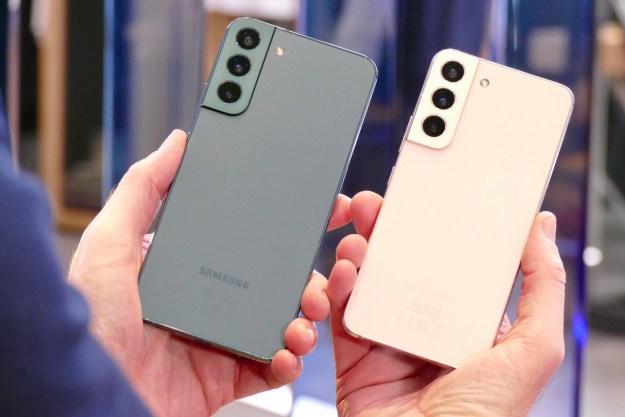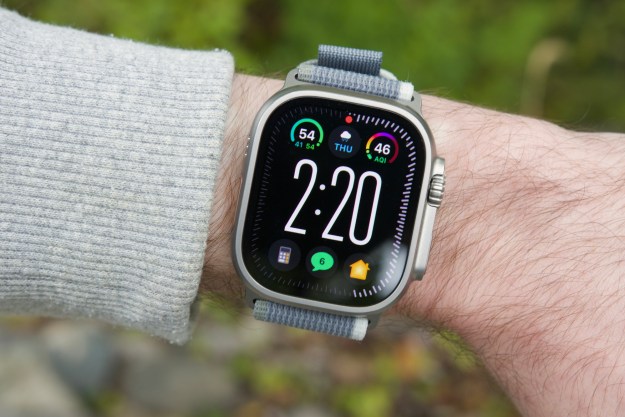
Sometimes, sinister plans end with a wimper. Yesterday, Steve Ballmer (Microsoft’s sometimes wacky, zealous CEO) spent most of his keynote apologizing. Beaten from poor reviews and, worse, poor sales of Windows devices since the debut of Windows 8 last fall, he seemed deflated. Instead of jumping around and acting goofy, he walked back and forth, stumbling on his words as he was forced to admit that Windows 8 was too much. Microsoft screwed up.
“We pushed boldly with Windows 8,” he said with a loud half-hearted chuckle. But now it’s time to “refine the blend.”
To save face after poor adoption of the Start screen-heavy Windows 8, Ballmer and his crew are retreating. To make users happy again, they are doubling down on the desktop and quietly abandoning Windows RT.
“Let’s balance them better, let’s complete them better. Let’s make it easier to start applications the way we’re used to with the millions of desktop applications that we’re familiar with today. So what we’re going to show you today is a refined blend …. Let’s reblend the desktop and modern UI experience and lets make sure that we give a good path forward for the millions of people who use desktop applications.”
To make money, Microsoft has decided that it must make amends.
The lack of a working desktop is exactly what soured everyone on Windows RT. Though it was designed to look identical to Windows 8, Win RT runs on ARM processors like Android and iOS. It boasts longer battery life, and comes with free versions of Microsoft Word, Excel, PowerPoint, and OneNote, but it has one major Achilles heel: It can’t run any standard Windows desktop applications, and Microsoft has locked down app development, limiting it to the Windows Store. Want iTunes, Spotify, Chrome, Adobe, or any other old Windows software? Sorry, pal. Not on Windows RT. The OS has a desktop, but it’s an empty one. The only apps it can run come from Microsoft’s own app store, and it makes a healthy 30 percent commission off of every one of them.
Hoping to nudge people toward the Windows Store and away from the Windows desktop, Microsoft pushed the hell out of Windows RT last October. It had such lofty hopes and dreams for RT that it released its own tablet, the Surface RT, to promote it. Things looked promising, at times. But as it turns out, when given the choice, users chose not to opt for tablets and laptops with severe software limitations (and thanks to Microsoft’s high OS licensing fees, expensive prices, too). Instead, they turned elsewhere.

By the end of the year, the RT bubble burst. Only 1 million Windows RT devices shipped around the world in 2012, giving the OS a microscopic share of the 116 million tablets sold last year – almost all of which were iPads or ran Google’s Android OS.
Eight months into its life, things have gotten worse. IDC reports that all Windows RT devices combined could only muster 200,000 devices sold, or 0.4 percent of the tablet market in Q1 2013. The OS was dwarfed even by Windows 8’s already Tyrion-Lannister-sized 1.6 million in sales (Android tablets sold 27.8 million units during this period).
Actions speak louder than sales, though. Microsoft now offers a free Type/Touch keyboard with its Surface RT, gave away 10,000 RT units to teachers, and lets educators buy the tablet for $200. Moves like these are often made to clear out unsold inventory. Dell has repeatedly cut its XPS 10 tablet from $500 to $450 to $300 as well, and the Asus VivoTab RT’s price has dropped in major retailers. New VivoTab’s all run on Windows 8.
There are still a handful of RT devices, but most of them came out last fall. Almost all new Windows 8 tablets and laptops run newer, more battery-friendly Intel processors, and include the full, desktop-friendly version of Windows 8 (soon to be the desktop smooching 8.1). Remember the Lenovo Yoga 11 (RT)? It’s been replaced by the Lenovo Yoga 11S, an almost identical device running Windows 8.
The black sheep of the Windows family has been given the room under the stairs.
Pressured by Intel, its hardware partners, and users, Microsoft is retreating on Windows RT. In less than a year, the OS has slid into complete obscurity. Surface RT owners will get an upgrade to Windows RT 8.1, but other than that, there is nothing to report except that it has virtually no presence. The black sheep of the Windows family has been given the room under the stairs.
This has happened to Microsoft a lot lately. Joining RT in the “that which shall not be named” category is Microsoft’s bold plan to restrict used games on the Xbox One. It was shelved after mounting gamer outrage and digs from the competition. Xbox One’s restrictions have something in common with RT, too. They’re about taking away freedom and pumping more cash into Microsoft’s bank account. Restricting used games means more game sales, and restricting desktop application use on Windows means more Windows Store apps will be sold. And that’s good business for Microsoft.
Windows RT will not die. Instead, much like those plans for Xbox, expect it to stay in Steve Ballmer’s chest of bad ideas. If the timing is right, and Microsoft’s fortunes turn around, it will attempt to restrict software again. The question is, will it fool us next time?


